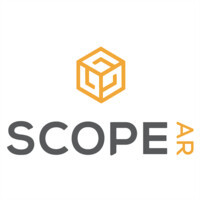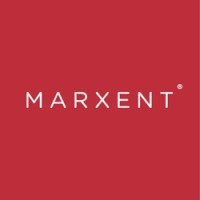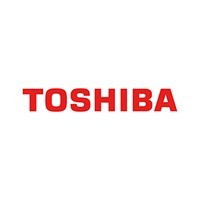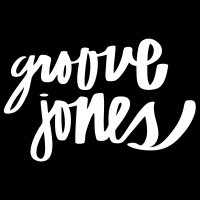Description

Scope AR

ViewAR SDK
Comprehensive Overview: Scope AR vs ViewAR SDK
Scope AR and ViewAR SDK are prominent players in the augmented reality (AR) industry, each offering unique solutions to various markets. Here's a comprehensive overview of both:
Scope AR
a) Primary Functions and Target Markets:
- Primary Functions: Scope AR provides an enterprise-focused AR platform known as WorkLink. The primary functions are to create, manage, and share AR-based instructions and support for complex tasks. These include remote assistance, guided work instructions, and real-time collaboration.
- Target Markets: The target markets for Scope AR include manufacturing, aerospace, automotive, oil and gas, and other sectors that require hands-on equipment maintenance, repair, and training.
b) Market Share and User Base:
- Market Share: As a specialized AR company focusing on enterprise applications, Scope AR's market share is concentrated within industries that benefit from AR-enhanced workflows. It holds a significant position among industrial sectors adopting AR technologies.
- User Base: The user base consists of large enterprises seeking to leverage AR for operational improvements. Notable clients include Lockheed Martin, Unilever, and other industry leaders.
c) Key Differentiating Factors:
- Focus on Enterprise Solutions: Scope AR distinguishes itself by offering robust AR solutions tailored for enterprises, emphasizing ease of content creation and real-time collaboration.
- Integration with Existing Systems: The platform provides integration capabilities with other enterprise systems such as ERP and PLM software, enhancing its utility in professional environments.
- No Coding Required: WorkLink allows non-technical personnel to create AR content without extensive coding knowledge, broadening its usability across teams.
ViewAR SDK
a) Primary Functions and Target Markets:
- Primary Functions: ViewAR SDK is a versatile AR platform designed to create a wide range of AR applications, from indoor navigation to ecommerce and advertising. It offers tools for developers to build customizable AR experiences.
- Target Markets: ViewAR targets diverse industries including retail, real estate, healthcare, and tourism, where AR can enhance customer engagement and experience.
b) Market Share and User Base:
- Market Share: ViewAR operates more broadly across consumer-centric and enterprise applications, sharing the AR development market with other cross-platform tools such as Unity and ARKit.
- User Base: The user base includes developers from start-ups to mid-sized companies, as well as larger organizations looking to create bespoke AR applications for customer engagement and innovative solutions.
c) Key Differentiating Factors:
- Flexibility and Customization: ViewAR provides a highly flexible SDK allowing extensive customization, suitable for a wide array of applications beyond industrial uses.
- Cross-Platform Compatibility: The SDK supports multiple devices and platforms, offering a comprehensive kit for developers to target both iOS and Android systems.
- Indoor Navigation Specialization: A notable feature of ViewAR is its indoor navigation capabilities, making it a preferred choice for indoor mapping and navigation solutions.
Comparison Summary
- Scope AR vs. ViewAR SDK: While Scope AR is more enterprise-focused with a specialization in industrial applications and augmented task guidance, ViewAR SDK offers a broader, flexible toolkit suitable for consumer applications and AR experiences across various sectors.
- Market Positioning: Scope AR holds a niche yet significant market position in enterprise solutions, whereas ViewAR SDK has a diverse user base across different application areas.
- Technology and Usability: Both products offer state-of-the-art AR capabilities, but Scope AR emphasizes ease of use and integration for enterprise applications, while ViewAR SDK excels in customization and platform versatility.
Each product's success depends on its ability to meet specific industry needs, with Scope AR targeting operational efficiency improvements and ViewAR SDK focusing on enhancing user experiences across different sectors.
Contact Info

Year founded :
2010
+1 855-207-2673
Not Available
United States
http://www.linkedin.com/company/scopear

Year founded :
Not Available
Not Available
Not Available
Not Available
Not Available
Feature Similarity Breakdown: Scope AR, ViewAR SDK
As of the latest data available, here's a comparison of the Scope AR and ViewAR SDK in terms of their features:
a) Core Features in Common
-
Augmented Reality (AR) Capabilities: Both platforms offer robust AR functionalities aimed at enhancing real-world interactions through digital overlays.
-
Cross-Platform Support: They provide compatibility across multiple devices, including smartphones, tablets, and AR glasses, supporting both iOS and Android.
-
3D Model Integration: Users can import and manipulate 3D models within the AR environment to facilitate various applications such as training, remote assistance, and product visualization.
-
Real-Time Collaboration: Both offer features that allow multiple users to collaborate in real time, making them suitable for remote assistance and teamwork scenarios.
-
Cloud-Based Services: They utilize cloud services for data storage, content management, and deployment of AR content, ensuring scalability and remote access.
-
Customizability and SDK Access: Developers can customize AR applications using their respective SDKs to suit specific business or training needs.
b) User Interface Comparison
-
Scope AR: Known for its user-friendly interface, Scope AR prioritizes ease of use, making it accessible to a wider range of users, including those who may not have a technical background. Its interface is often described as intuitive, providing quick access to essential tools and features needed for AR content creation and deployment.
-
ViewAR SDK: This platform is often tailored for developers and offers a comprehensive set of tools that might require a steeper learning curve. The interface is feature-rich, providing in-depth customization options, which can be advantageous for tech-savvy users and developers looking to create highly specialized AR experiences.
c) Unique Features
-
Scope AR:
- WorkLink Platform: Offers a specific focus on enterprise AR solutions, particularly in remote assistance and guided workflows, making it ideal for industries such as manufacturing and field service.
- No-Coding Content Creation: Provides tools that allow non-developers to create AR content without any programming knowledge, reducing the barrier to entry for businesses.
-
ViewAR SDK:
- Module System: Allows developers to integrate various pre-made modules, like indoor navigation or configuration tools, providing versatility in application creation.
- White-Label Solution: Enables companies to rebrand and customize the AR applications as their own, which can be crucial for agencies and integrators.
- Flexibility in Development: Offers extensive API support and integration capabilities with other software and hardware, which is beneficial for custom projects requiring unique solutions.
Each product has its strengths, appealing to different user needs and application scenarios. Scope AR is well-suited for enterprises looking for quick deployment and ease of use, while ViewAR SDK offers deeper customization for technical users and developers.
Features

Not Available

Not Available
Best Fit Use Cases: Scope AR, ViewAR SDK
Scope AR and ViewAR SDK are both powerful tools in the augmented reality (AR) space, but they cater to different use cases and types of businesses. Here's a breakdown of their best fit use cases:
a) Scope AR
Best Fit Use Cases:
-
Enterprise-Level Solutions: Scope AR is particularly well-suited for large enterprises looking for comprehensive AR solutions. It primarily focuses on improving workforce productivity and operational efficiency through real-time, augmented guidance.
-
Field Service and Maintenance: Businesses involved in complex machinery maintenance, repair, and operations (MRO) benefit greatly from Scope AR. It allows technicians to receive step-by-step instructions overlaid on the machinery via AR, thus reducing downtime and errors.
-
Remote Assistance: Companies that require remote support services to provide expert guidance to field technicians can leverage Scope AR’s remote assistance capabilities. This feature allows experts to see what the on-site technician sees and guide them through complicated procedures.
-
Training and Onboarding: Organizations with extensive training needs can use Scope AR to create interactive AR training modules that are more engaging and informative than traditional methods.
Industries Catered:
- Manufacturing
- Aerospace & Defense
- Oil & Gas
- Healthcare
Company Sizes:
- Large enterprises and well-funded medium-sized businesses that can invest in robust AR solutions and have significant operational scale.
b) ViewAR SDK
Best Fit Use Cases:
-
Custom AR Applications: ViewAR SDK is an excellent choice for businesses or developers looking to create tailor-made AR experiences. It provides a versatile platform that supports a wide array of AR use cases, from e-commerce to navigation and beyond.
-
Retail and E-commerce: Companies in retail can use ViewAR for virtual product visualization, allowing customers to see how products would look in their environment, enhancing the online shopping experience.
-
Indoor Navigation and Wayfinding: Businesses with complex layouts, such as shopping malls, airports, or large office buildings, can utilize ViewAR SDK for creating indoor navigation solutions to guide visitors with ease.
-
Furniture and Interior Design: Companies in the furniture industry can benefit from ViewAR’s capabilities by enabling customers to visualize furniture placement in their homes, leading to better purchasing decisions.
Industries Catered:
- Retail
- Real Estate
- Furniture and Interior Design
- Tourism
Company Sizes:
- Startups and medium-sized companies focusing on consumer engagement and sales conversion. It’s also suitable for larger companies that want to enhance their existing digital offerings with AR features.
Conclusion
Scope AR and ViewAR SDK cater to different needs depending on the industry and the specific use cases. Scope AR focuses more on boosting productivity in industrial settings through AR-enhanced training and remote assistance, making it ideal for large-scale operations. On the other hand, ViewAR SDK offers flexibility for developers and businesses to create customized AR solutions across various consumer-facing industries, which is beneficial for companies aiming to enhance customer interaction and engagement.
Pricing

Pricing Not Available

Pricing Not Available
Metrics History
Metrics History
Comparing teamSize across companies
Conclusion & Final Verdict: Scope AR vs ViewAR SDK
To arrive at a conclusion and final verdict between Scope AR and ViewAR SDK, it's essential to evaluate the products on key factors such as functionality, ease of use, integration, scalability, support, and pricing. Here is a breakdown and evaluation:
a) Best Overall Value
Scope AR generally offers better value for businesses seeking a comprehensive and user-friendly augmented reality (AR) solution primarily for enterprise use cases, such as remote assistance and collaboration in industries like manufacturing, field service, and training. It excels in interactive guided instructions and real-time collaboration, providing robust tools for workforce enablement.
ViewAR SDK, on the other hand, is better suited for developers or businesses wanting a versatile platform that can support various AR applications across different industries, including e-commerce, navigation, and custom AR experiences. It offers significant flexibility and customizability, best for those with specific or unique AR needs.
In summary, the best overall value depends on user needs:
- For enterprise applications focused on AR-based training and support: Scope AR.
- For developers seeking flexibility for a range of AR applications: ViewAR SDK.
b) Pros and Cons
Scope AR:
-
Pros:
- Strong emphasis on real-time collaboration, enabling remote assistance and on-the-job training.
- User-friendly interface designed explicitly for non-technical users.
- Effective in reducing operational time and improving task efficiency.
- Robust integration capabilities with existing enterprise systems.
- Focused support for industries such as aerospace, manufacturing, and energy.
-
Cons:
- May have a steeper learning curve for those looking to customize or extend beyond its core functionalities.
- Potentially higher costs for larger enterprises compared to more flexible, developer-oriented platforms.
- Limited scope outside specific enterprise applications.
ViewAR SDK:
-
Pros:
- Highly flexible SDK allowing for diverse applications across numerous industries.
- Offers a wide array of features like indoor navigation, e-commerce tools, and custom app development.
- Strong developer support with extensive documentation and demo applications.
- Competitive pricing model, particularly appealing for developers or startups.
-
Cons:
- Requires more technical knowledge to create and deploy applications.
- May not offer the same level of guided user experience out-of-the-box as Scope AR.
- Dependency on developer resources for customization could increase time-to-market.
c) Recommendations
For users deciding between Scope AR and ViewAR SDK, consider the following recommendations:
-
Identify Your Core Use Case:
- If your primary need is for enterprise-level solutions focused on remote support and training, Scope AR is likely the better choice.
- For creative projects that require flexibility and custom development, consider ViewAR SDK.
-
Evaluate Technical Resources:
- If you have a team comfortable with SDKs and custom application development, or if you work with developers, ViewAR SDK offers more expansive possibilities.
- Organizations looking for turnkey solutions with minimal setup should consider Scope AR.
-
Scalability and Long-Term Vision:
- Consider the growth path. If you envision scaling within specific use industries, Scope AR has strong integration with enterprise systems.
- For broader scalability and adaptability in new AR ventures and markets, ViewAR SDK has the edge, particularly in non-traditional AR sectors.
Ultimately, both platforms offer substantial tools; the decision rests heavily upon the specific needs of the user and the technical capability of the team responsible for implementing the solution.
Add to compare
Add similar companies




